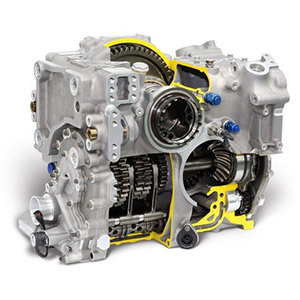R&D Tax Credit News

How to Use the R&D Credit as Non-Dilutive Funding
July 9, 2019
Surprisingly, a majority of small to medium size businesses have never heard of the R&D Credit. Not surprisingly, they’re not taking advantage of these valuable sources of funding. When they are aware and claiming the Credit, they’re often leaving money on the table by not maximizing the amounts included. Whether you plan on claiming the Credit on your own, with your accounting firm, or use a specialist like Hull & Knarr, here’s how to get started.
What is the R&D Credit?
Technically called the Credit for Increasing Research Activities IRC §41 (Research & Experimentation Tax Credit), the R&D Credit provides a financial reward to companies in the US for creating or improving products, processes, or software. By doing so, its intent is to generate innovation in the United States and keep high-paying, high-tech jobs stateside. You don’t have to be in a “high tech” industry to qualify for the Credit. All industries conducting qualified research (keep reading to find out what qualifies as R&D) are eligible for the Research Credit.
The R&D Credit has been around since the 1980s as a temporary fixture of the Tax Code. But in 2015, the PATH Act made the Federal R&D Tax Credit permanent. This means that going forward companies can rely on the Credit as a valuable financial tool to plan their future research efforts. Also, in addition to the federal credit, most states now offer similar incentives for R&D activities.
Key Facts of the R&D Credit
- Roughly $2 billion in tax credits are received by small to medium-sized businesses just like yours every single year
- In December of 2015, the PATH Act made the R&D Tax Credit permanent fixture of the Tax Code
- The U.S. government reinvests more than $11 billion into businesses to reward and promote qualified research on US soil
- In addition to the Federal R&D credit, 45 states now offer a similar incentive with some of these incentives being fully refundable
What Activities Qualify for R&D Credits?
There’s a wide range of activities small to medium size business perform daily that would routinely qualify for R&D Credit. These range from conceptualizing new products or solutions for customers, having technical discussions to resolve product or process issues, or discussing how to improve a manufacturing process for example. Not to mention the more straightforward “R&D” activities like drawing a new product, running lab experiments, writing code for new software (or a software enhancement), etc.
The good news is that established in the legislation (Sec. 41 of the Tax Code) is what’s commonly referred to as the Four-Part Test. This set of criteria defines qualified research and provides guidance on what activities are eligible for the R&D Credit.
Four-Part Test
- Technological in Nature – Activities you perform must be based on a “hard science” such as physics, biology, chemistry, metallurgy, and computer science. Therefore, the activity cannot be based on the “soft sciences” which include psychology, humanities, arts or social sciences.
- Technological Uncertainty – You are performing your development activities to uncover information you don’t already know, creating uncertainty as to the appropriate method, design, or capability related to your product, process, or software. It’s important to note that you do NOT need to uncover information that is completely new to the world. It only has to be new to your business.
- Process of Experimentation – Your activities require a process of theoretical and/or physical evaluation that can result in the development of design alternatives. This process of experiment will inherently exist if you have technical uncertainty (part 2 above) to resolve.
- Permitted Purpose – The goal of your activity must be to improve the fit, form, or function of a product, process, or software. This does not include development directly related to aesthetic changes or technology that does not build on a company’s knowledge base.
What Expenses Can Be Included?
If you are carrying out activities that pass the Four-Part Test (read above), congratulations. Your company is conducting qualified research and experimentation. Now, you need to determine what costs can be included in the R&D Credit calculation and begin gathering these expenses.
- Wages – Taxable wages related to the conduct of qualified research and experimentation are includable as a research expense. The wages are quantified by establishing a percentage of an employee’s time engaged in the direct conduct or direct supervision of qualified research. You don’t have to have a time tracking system to quantify an employee’s qualified research percentage by the way.
- Supplies – In its simplest definition, these are materials used to test product or process designs and improvements. For example, materials used in design testing procedures, prototype builds, and performance evaluations.
- Contract Research – Expenses paid to subcontractors, consultants, or other outside vendors for design and testing services are includable when you bear the financial risk and retain intellectual rights to the resulting information. These contract research expenses, as they’re called, are includable at 65% of the actual costs incurred.
Indicators of Qualified Research
Determining if you have activity that qualifies for the R&D Credit and identifying their associated costs is, in many ways, an investigative process. This is where hiring an expert to calculate and document your R&D Credit can be a really smart move, so you don’t spend all of your time second guessing your decisions and ultimately including too little of your eligible expenses.
There are, however, a few really great indicators of qualified R&D. If your company has one or more of the following factors present, there’s a very high likelihood that you have qualified R&D activities:
- Degreed engineers or scientists on staff
- Operates in a manufacturing industry
- Patentable products or production methods
- Has new/continuous improvements to products and/or processes
- Operates in industry where prototyping is common
- Is awarded government R&D projects, from programs such as SBIR and STTR
- Engages in Continuous Quality Improvement efforts
- Manufactures simple products in a highly automated system
- Creates high warranty costs due to improper product/process design
- Develops software using new algorithms, techniques or architectures
Getting the R&D Credit
After you determine your eligible activities and their associated costs, the calculation of the R&D Credit is outlined in Sec. 41 of the Tax Code. There are currently 3 calculation methods outlined, and they each require a comparison between your current level of R&D spend and your R&D spend in a past period that can be the last 3 years, sometime in the early 2000s (if you were around then), or the mid-1980s (yikes!). Your choice mostly depends on when your company first started performing R&D.
But in either case, your R&D Credit will roughly amount to 6% of your qualified R&D expenses on the Federal level. In addition, if your state has an R&D Credit, you will get an additional 2%-6% State R&D Credit on top of the Federal Credit. So all told, you could have 8%-12% of what you already spent in R&D coming back to your company as a dollar-for-dollar offset of your taxes (mostly income taxes, but the Federal Credit can also be used against Payroll Taxes in some instances).
Check out our R&D Tax Credit calculator to get an estimate of what you could stand to benefit.
What Do I Do Next?
Now armed with this information, you are ready to start identifying and calculating valuable R&D Credits to help fund your next R&D projects. Although claiming the R&D is not a trivial task, you can enlist the help of experts in this field to make the process a breeze for you.
Often R&D Credit experts guide you through the entire process and handle most of it for you from identifying the eligible activities and costs to defending your Credit if you get audited. It’s not that you can’t calculate and claim the Credits on your own. Having an expert on your corner maximizes your dollars and gives you the peace of mind, knowing that you won’t need to waste your valuable time convincing an IRS auditor that your R&D activities qualify for the Credit.
Getting expert help is easy. You can contact us to chat about the R&D Credits and other Tax Incentives. The conversation is free, and the advice is free. You’ll likely come away more informed and ready to take advantage of the R&D Credit.
Featured Projects





